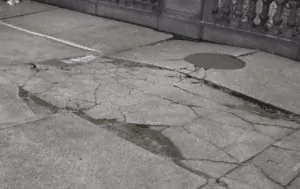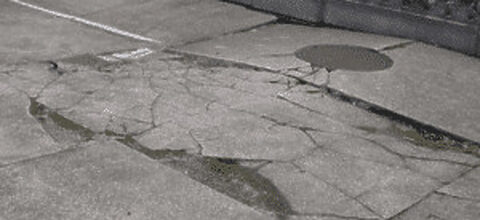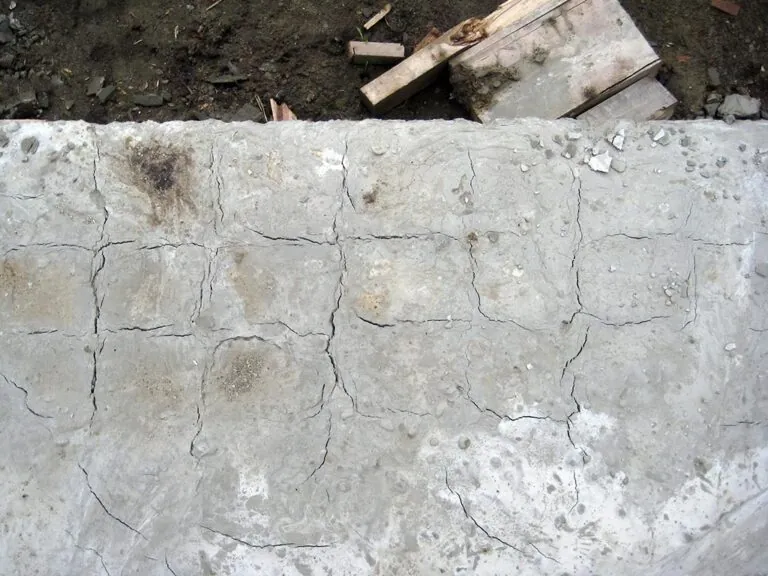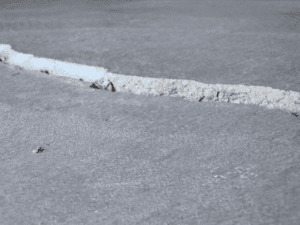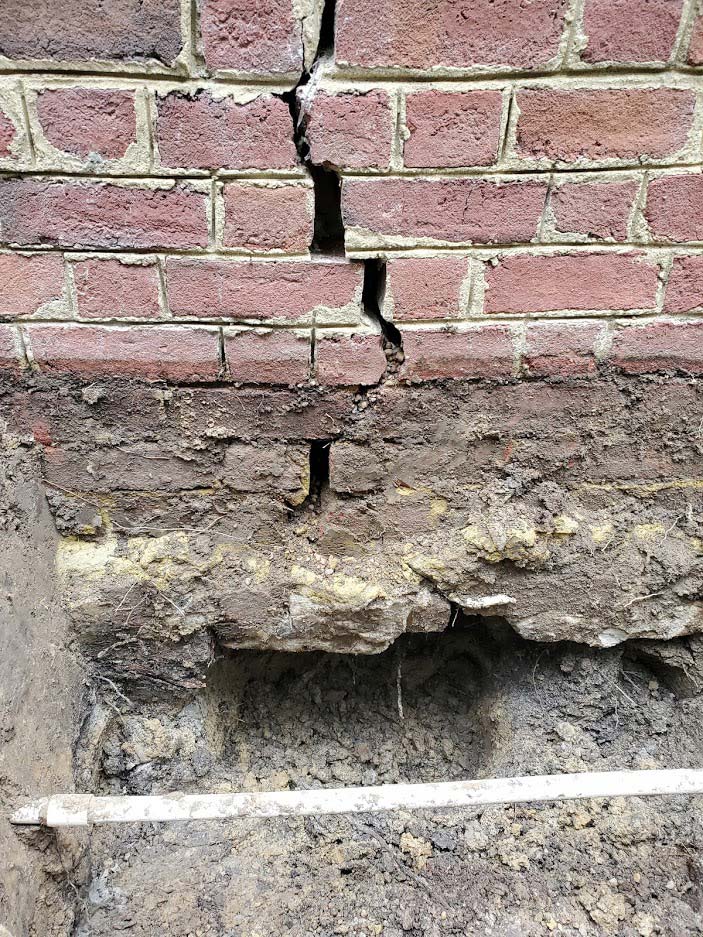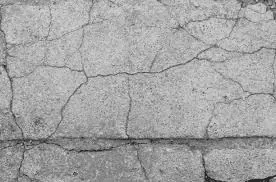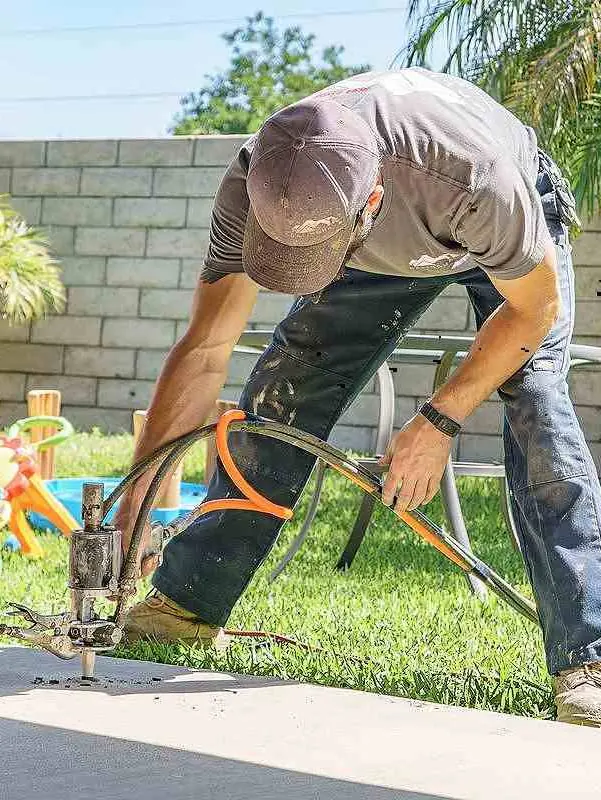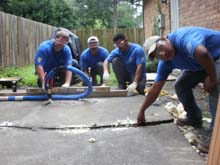Are you looking for information about the different types of cracks in concrete slabs? If so, you’ve landed on the right page. This article will cover seven different types of cracks in concrete slabs, including those caused by tree roots, heaving, and settling.
Cracks in Concrete Slabs Are Pretty Common
Cracks in concrete slabs are pretty common. In fact, you should even expect them. They’re often caused by shrinkage during the concrete curing (i.e., hardening) process. However, they’re also caused by tree roots and temperature fluctuations. The good news is they can usually be repaired rather than digging up the slab and pouring fresh concrete.
Common Types of Cracks in Concrete Slabs
Shrinkage Cracks
All concrete shrinks to some extent as it dries and cures (i.e., hardens). However, the shrinkage will be even more significant if there’s too much water in the concrete mix. Shrinkage cracks often occur around the corners of things. For example, suppose you pour concrete around a square column. In that case, you could end up with hairline cracks radiating from the corners of the column. These types of cracks are not surface cracks. Shrinkage cracks go through the entire thickness of the slab.
Expansion Cracks
Concrete slabs can also crack during hot weather. This is because concrete expands when it gets hot. When this happens, the slabs will expand and start pushing on various things in their way, including other slabs. Because concrete isn’t flexible, cracks form.
Cracks Caused By Heaving
When the ground freezes, the soil expands and pushes upward on the slab. This upward movement can cause cracks to form.
Cracks Caused By Tree Roots
Concrete slabs such as sidewalks and driveways can crack when tree roots invade and push up on the slab.
Cracks Caused By Settling
Concrete can settle into the ground when voids form under the slab. The voids might be caused by erosion under the slab, the decomposition of roots or other material, or something else. Whatever the reason, the slab settles into the soil, putting pressure on the slab, and cracks form.
Cracks Caused by Something Heavy on the Slab
Anything extremely heavy on top of a slab can cause cracks. This includes things like dumpsters or RVs parked on a driveway. These types of cracks tend to happen when the ground under the slab is soft due to excess moisture.
Concrete Cracks Caused by Drying Too Quickly
Spiderweb-style cracks in concrete can happen when the surface of the slab dries too quickly. These are referred to as crazing cracks and don’t affect the strength of the concrete. Concrete stamping can also suffer cracks if the surface dries too fast. The small cracks form around the stamped joints and don’t look very nice. However, they don’t affect the structural integrity of the slab.
It’s not always possible to know what caused a particular crack. You can minimize the chance of cracks in concrete slabs by having a good concrete mix, preparing the site correctly, and practicing good finishing.
How to Fix Cracks in Concrete Slabs
Today, most cracked and uneven concrete slabs are lifted and leveled using a repair method known as polyurethane foam injection. The procedure involves drilling small, penny-sized holes in the concrete and then using the holes to inject the waterproof poly foam under the slab. As the foam begins to immediately expand, it fills the voids under the slab and lifts it back up, closing the cracks.
Polyurethane foam injection is a quick procedure, and most jobs usually take around three hours tops. Fifteen minutes after the repair is complete, the slab is ready for use again. Poly foam is stronger than the cement slurry used in an older concrete leveling technique called “mudjacking.”
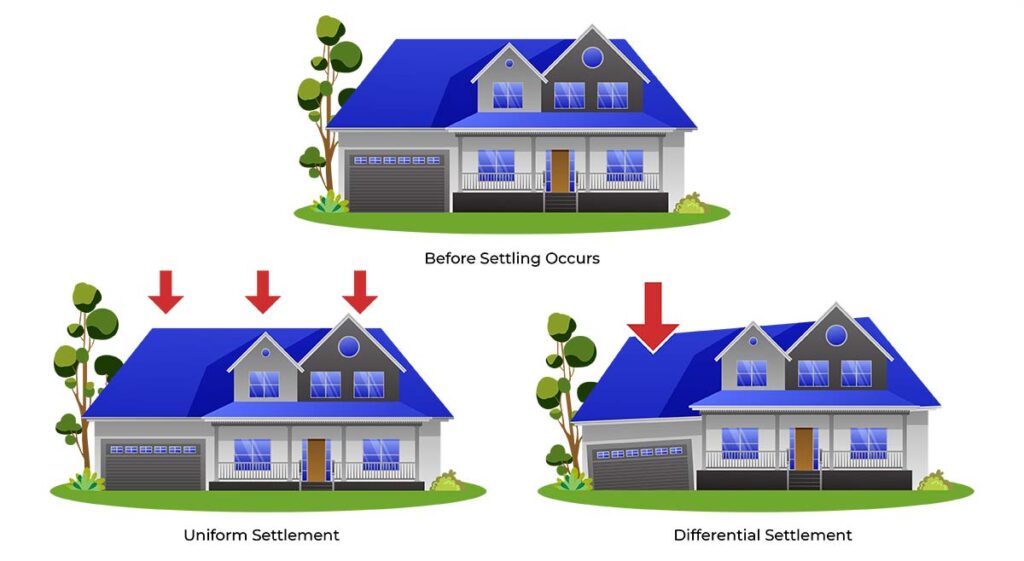
How to Fix Cracks in Concrete Foundation Slabs
Polyurethane foam is also used to fix cracks in concrete foundation slabs. Cracked, unlevel foundation slabs usually happen when there’s a problem with groundwater around the foundation. Drainage problems leading to excess water in the soil under and around the foundation or drought where there isn’t enough moisture in the soil are the main causes of foundation trouble. Both lead to a phenomenon called “differential settlement” (see above graphic) and cracks in the slab.
Fixing a crack in a concrete foundation slab often involves using slab piers. Slab piers are installed through the slab and anchor the foundation to load-bearing soil. This lifts interior walls that have started to settle.
For more information see, Normal Foundation Cracks: Is There Such a Thing?
If you’re worried about cracks in concrete slabs on your property and are in our service area, contact us today for an inspection and repair estimate.

